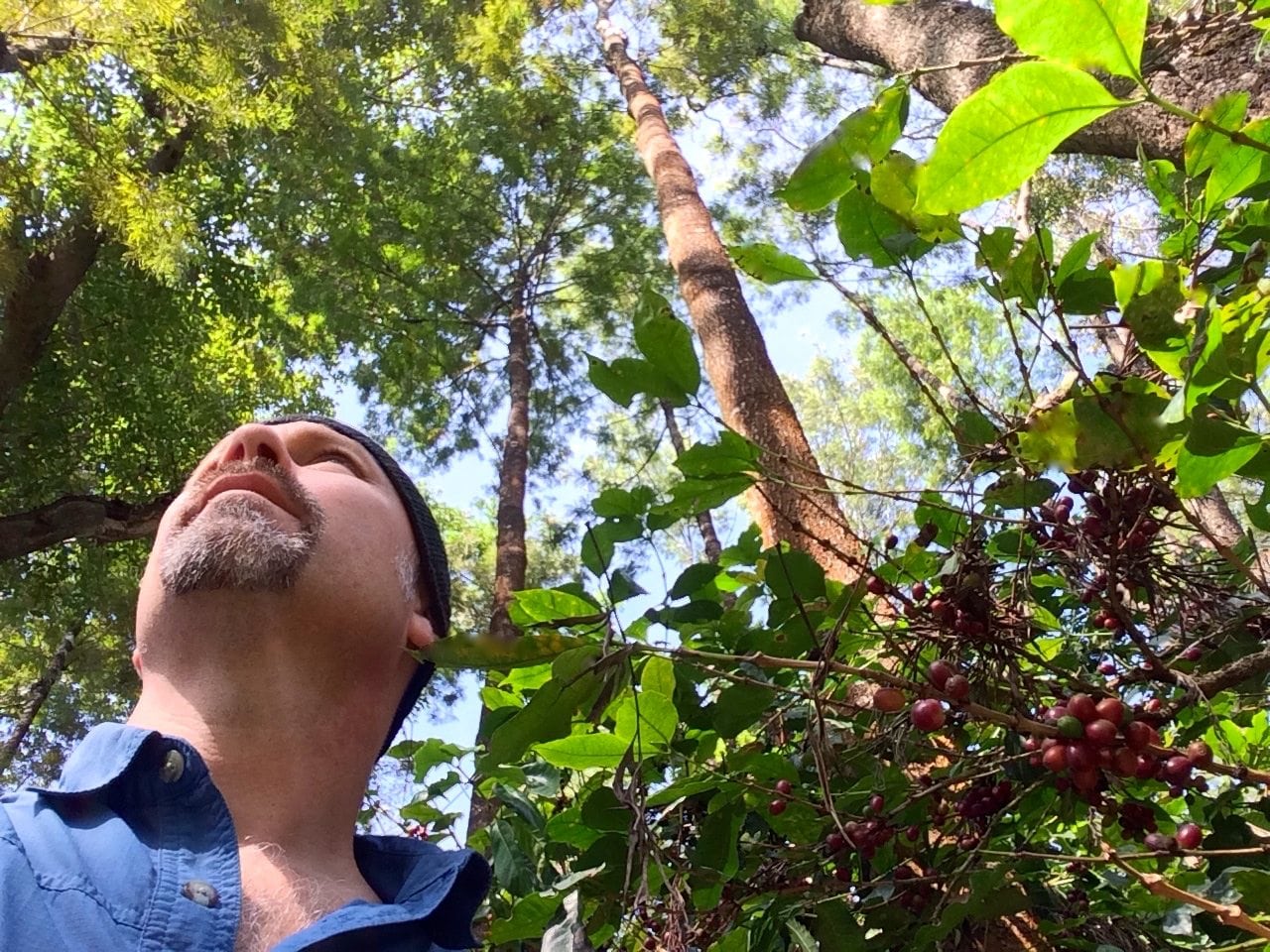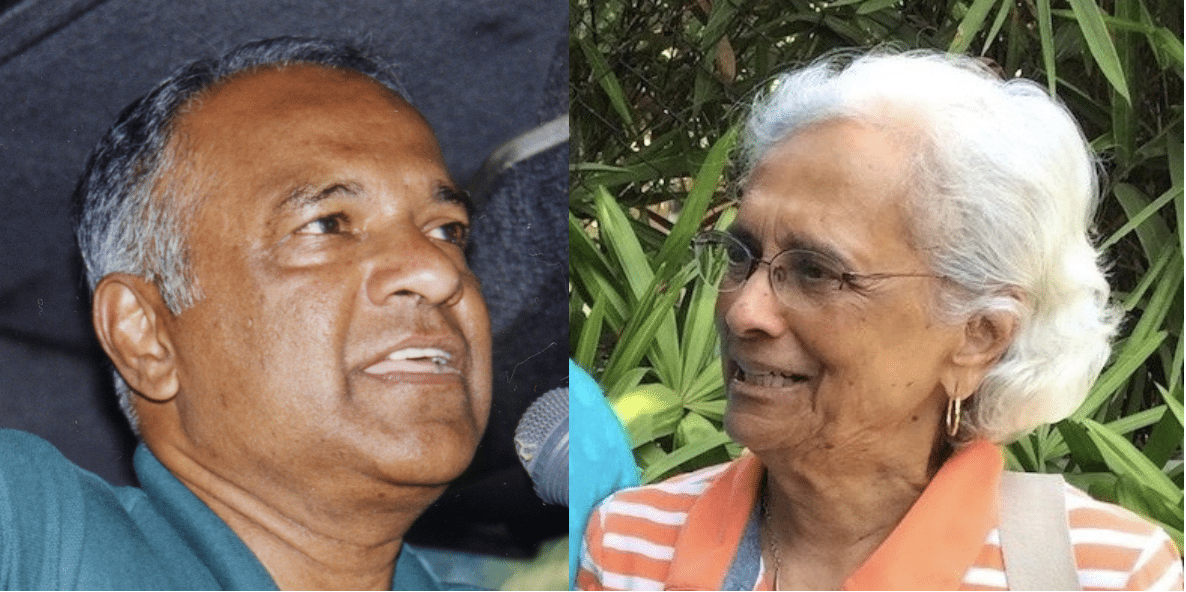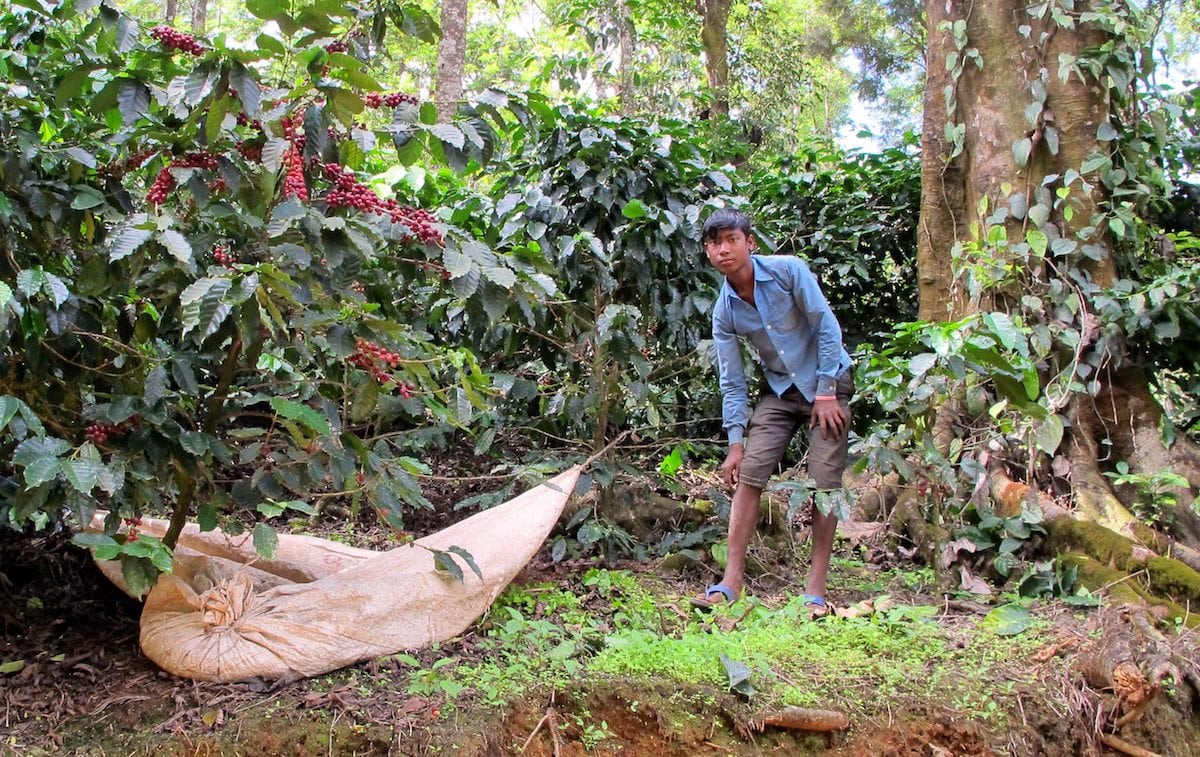Indian Coffee: Made In The Shade
by Barth Anderson
They grow coffee in India?
Ever since my first sip of Indian coffee I have been deeply fond of its incredibly smooth, comforting character and refined sense of balance. After years of working with these beautiful coffees and the people who grow them, I have come to discover the rich and complicated past that has shaped Indian coffee. One of the most surprising things I have learned in the process is that Indian coffees have a history that predates all but the first movement of coffee out of Ethiopia to Yemen.
Thanks to the seed smuggling efforts of the mystic sage Baba Budan who traveled to Arabia in the late 16th Century, India is the third oldest coffee producing origin since coffee’s heirloom roots in Ethiopia moved up through Yemen and eastward. Coffee has been actively cultivated there ever since. Yet I continue to ask myself why are so many people in North America still unfamiliar with Indian coffee?

Beneath the tree canopy at Kalledevarapura Estate, Chikmagalur
Modern day mystics
What I do know is that my introduction to Indian coffee is due to the explorations and innovations of one individual in particular who opened up this door to me in 1996 when I called him on the phone at his California home. I saw an ad in what was at the time just about the only periodical within the coffee trade. It was, and still is, The Tea & Coffee Trade Journal. The small ad at the bottom of the page said something to the effect of “Josuma Coffee — Importers of Specialty Coffee from India”. By the mid 1990’s I had already spent more than a dozen years exploring coffees from around the globe, yet I had never even heard of coffee from India. I just had to make the phone call.
I came to learn that in the early 1990’s, then Nuclear Physicist, Dr. Joseph John, first connected with Indian coffee growers who were interested in improving the quality of their coffee. As his reputation for working with coffee producers grew, the Indian government eventually reached out to Dr. John to ask if he would help establish India as a world class specialty coffee producer.
Dr. John accepted the request and, in turn, became so captivated with Indian coffee that he left the field of nuclear physics. Together with his keen and charismatic wife, Urmila, they founded the Josuma Coffee Company in San Francisco, CA and began importing coffee from India to the United States in 1992. The samples he sent to me after we spoke on the phone that day marked the beginning of my deep fondness for Indian coffee.

Dr. Joseph John and Mrs. Urmila John
The curious case of coffee cultivation in India
With its long lived history of cultivation on the heels of the Middle Ages, Indian coffee endured a period of tight governmental control from the 1940’s through the early 1990’s. During this time, coffee farmers were fully subsidized by the Indian government for their farming efforts regarding the production of coffee. These subsidies included the development of infrastructure, roads, provision of coffee seedlings, access to processing equipment, fertilizer and more.
While under cultivation, the coffee was the responsibility and property of each farmer. There was a catch, however. The moment the coffee cherry was plucked from the tree, it became the property of the Indian government. Upfront governmental subsidization belied an unsustainable economic cycle which offered no financial return for a coffee farmer’s harvest.
The governmental focus on coffee became based entirely upon increasing coffee volume for export. Coffee from each farm was pooled together and homogenized so that shipping containers could be filled. Coffee quality took a back seat to quantity. In turn, producers had absolutely no incentive to produce quality coffee as they were offered no remuneration in return.
Picking coffee at Kerehuckloo Estate, Chikmagalur
Coffee polyculture
Amidst this profitless cycle, how could coffee farmers make a living farming coffee if their harvest was not actually theirs? Somehow through a combination of intellect and sheer effort, an approach emerged for Indian coffee farmers despite the regulation. It became clear to farmers that crops cultivated alongside coffee could benefit from many of the same subsidies provided for coffee growing. If another product could be harvested along side the coffee, a farmer could have a crop to sell. This simultaneous cultivation of crops in close proximity to one another is the foundation of what agronomists call polyculture. Indian farmers call it sensible. This kind of farming has become the norm throughout India’s coffee lands.
While this diversified approach to growing crops provided a compelling incentive, numerous other challenges of polyculture farming emerged. Not only did farmers have to learn how to cultivate a variety of plants in and around their coffee trees, they also had to provide each plant with their own particular requirements for growth. In addition, they had to figure out how to stagger harvests to accommodate for the labor intensive nature of harvest time.
Learning how to schedule the timing of various harvest cycles is particularly tricky. But when successfully executed, multiple harvests throughout the year help to ensure year round income. This is rare in coffee cultivating cultures. It is more often the case that each years’ coffee harvest must support a farmer for the entire year.

Devon Estate, Mertiparvata (Coffea arabica, Piper sp. vines, Silver Oak, Solanum sp.)
Each of these challenges proved worthy of the struggle for innovation, largely because the harvest of the companion crops belonged to the farmers. Despite governmental ownership of the coffee itself, the most complex, shade grown, polyculture farming system in the world was born.
Managing the shade
Coffee trees grown close to the equator and at high altitudes need too be protected from the sun to survive. Shade is required by a coffee tree to flower and produce fruit. Growing at different altitudes and along different geographic exposures initiated a selective scheme for planting canopy trees for different uses as well as with varying rates of maturity. Fast growing trees like Silver Oak provide a more rapid cycle for the production of wood pulp. Slow growing trees like Teak produce structurally sound wood for the building industry.
Sandalwood trees produce the highly valued, and now incredibly ecologically vulnerable aromatic wood used for ornamental objects and incense. Rubber trees which prefer lower altitude are tapped for their latex. Water loving Areca trees grow well through riverine areas and produce Areca nuts valued for their psychoactive effect. Each of these tree canopies provides a shaded understory within which to cultivate an enormous variety of other crops.
In addition to shade, canopy trees provide a structure on which to grow other kinds of crops. Peppercorn vines are one of the most successful and their cultivation throughout the Indian understory has become another highly valued Indian product.

Open air market, Balehonnur
This understory has also proven to be ideal habitat for growing nutmeg, cinnamon, tea, cardamom, and a bountiful supply of fruits, herbs, seeds, spices, drupes, grains, pepos and countless vegetables and root stocks. Indian farmers cultivate them all. The moment you step into an Indian marketplace, an exotic world of vegetables, fruits and spices reveals itself. While many of these products have grown in India for millennia, it has been through the ingenuity of the Indian coffee farmers that a seemingly unsurmountable challenge posed by a controlling government was turned into a true success. And since the release of governmental control of coffee, coffee too has become a valuable product for each farmer at long last. Coffee quality has been incentivized in no small part due to the efforts and directives of Dr. Joseph John.
Polyculture breeds a healthy ecosystem
This broad diversity of plants is hugely supportive of the avian communities, mammals, marsupials, reptiles and insects that dwell in the strata within and below the canopy. As a living canopy rains down upon the terrestrial ecosystem, the greatest benefits of this system become concentrated in the life of the soil.

Farm owner, Prem Kurian admiring the vibrant soil at Badnekhan Estate, Mertiparvata
The microbes, insects and mycorrhizae that dwell in the dirt break down all of this energy and return the nutrients back to the plants that have fed them. The activity in this soil is so vibrant it smells of life itself. In turn, the overall health of the nutrient cycle in an Indian coffee farm is ensured by the farmer’s commitment to the complex methodology of polyculture.
Modern day climate change and resiliency through polyculture
The requirements of Indian coffee farmers to innovate to unlock the intricacies of their farms’ microclimates have been of critical importance to their success. Historically the challenges farmers faced fell largely upon their capacity to coordinate, manage and harvest each crop. Today as we face new environmental challenges which appear to be the norm in the 21st century, the conversation among Indian coffee farmers is more often centered around the very measurable effects of global climate change and how climate change affects the nature of arable lands. The steady increase of mean global temperature and the extremes around that mean have already had a profound impact on where coffee can and can’t grow. Moving crops higher and higher to avoid increasing temperatures has its own limitations; the ancient mountains in Indian coffee territory top out at just over 4000’. On many farms, they are already growing at their highest altitudes.
The intensity of recent global storm events presents yet another set of challenges from furious wind storms and flooding to periods of incessant heat and no rain. The frequency and ferocity of these storm events exceed those in all recorded history. The fact that these events are highly unpredictable and continue to be on the move only compounds the situation.
Despite the perpetual struggles that every individual involved in agriculture must face, Indian coffee farmers have protected themselves by engineering ecological resiliency into their farming methods. For a century and a half, their global commerce based farming systems have become more and more based upon biodiversity, soil health, and the synergistic relationships between a multitude of organisms living together in a managed natural environment. It is these biologically diverse farming systems that provide the most resilient environments in the face of climate change.
Oddly enough, after all of the effort spent managing nature, Indian farms have come to emulate what was once a native jungle ecosystem. The difference is that this jungle has been designed by the farmers themselves.
I now understand that what I experienced in my first sip of Indian coffee is deeply rooted in an intricate web of relationships between farmers, the living earth and the complex cultural history of India. Ingredients that have come together in an ever changing world to make an incredibly beautiful cup of coffee.
